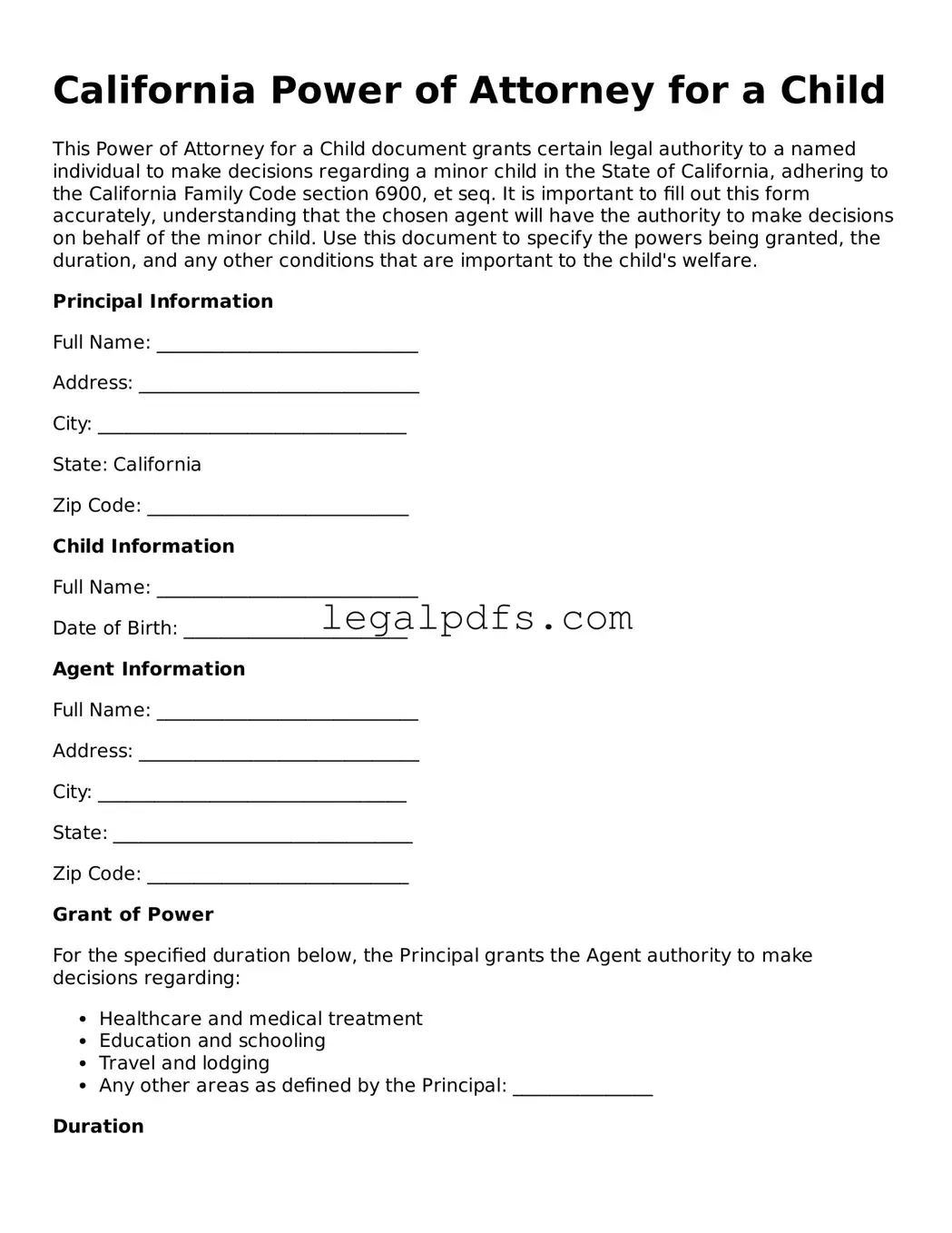California Power of Attorney for a Child
This Power of Attorney for a Child document grants certain legal authority to a named individual to make decisions regarding a minor child in the State of California, adhering to the California Family Code section 6900, et seq. It is important to fill out this form accurately, understanding that the chosen agent will have the authority to make decisions on behalf of the minor child. Use this document to specify the powers being granted, the duration, and any other conditions that are important to the child's welfare.
Principal Information
Full Name: ____________________________
Address: ______________________________
City: _________________________________
State: California
Zip Code: ____________________________
Child Information
Full Name: ____________________________
Date of Birth: ________________________
Agent Information
Full Name: ____________________________
Address: ______________________________
City: _________________________________
State: ________________________________
Zip Code: ____________________________
Grant of Power
For the specified duration below, the Principal grants the Agent authority to make decisions regarding:
- Healthcare and medical treatment
- Education and schooling
- Travel and lodging
- Any other areas as defined by the Principal: _______________
Duration
This Power of Attorney shall begin on _______________ and shall expire on _______________, unless otherwise revoked or terminated by the Principal or by operation of law.
Signatures
The Principal and Agent affirm that they fully understand the powers being granted, they agree to these terms, and they execute this document voluntarily on the dates indicated below.
Principal Signature: ______________________ Date: _____________
Agent Signature: _________________________ Date: _____________
State of California County of ____________
On the _____ day of ____________, 20XX, before me, ____________________ (name of notary), personally appeared _________________ [Name(s) of Principal and/or Agent], known to me to be the person(s) whose name(s) is/are subscribed to the within instrument, and acknowledged that he/she/they executed the same in his/her/their authorized capacity(ies), and that by his/her/their signature(s) on the instrument, the person(s), or the entity upon behalf of which the person(s) acted, executed the instrument.
I certify under PENALTY OF PERJURY under the laws of the State of California that the foregoing paragraph is true and correct.
WITNESS my hand and official seal.
Signature of Notary Public: __________________
(Seal)
